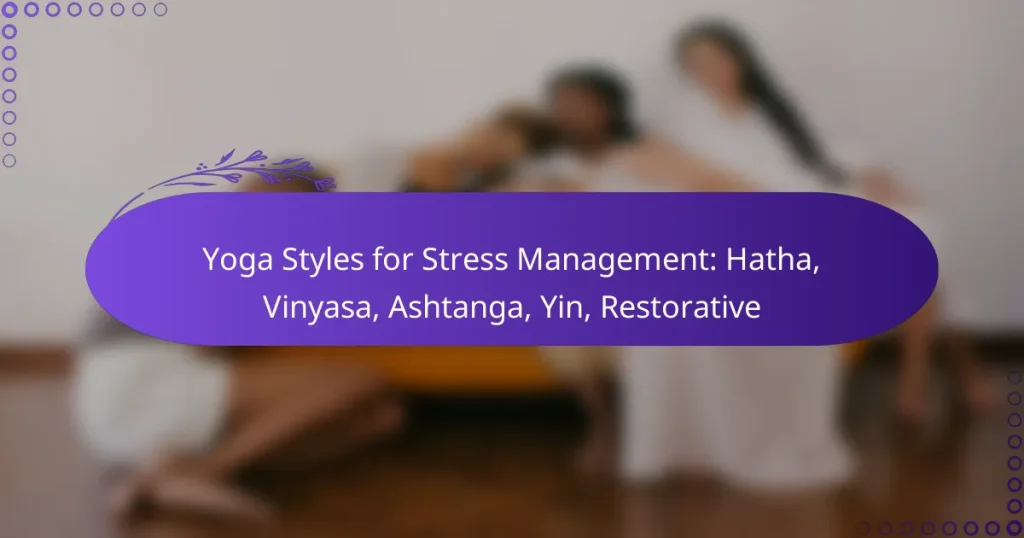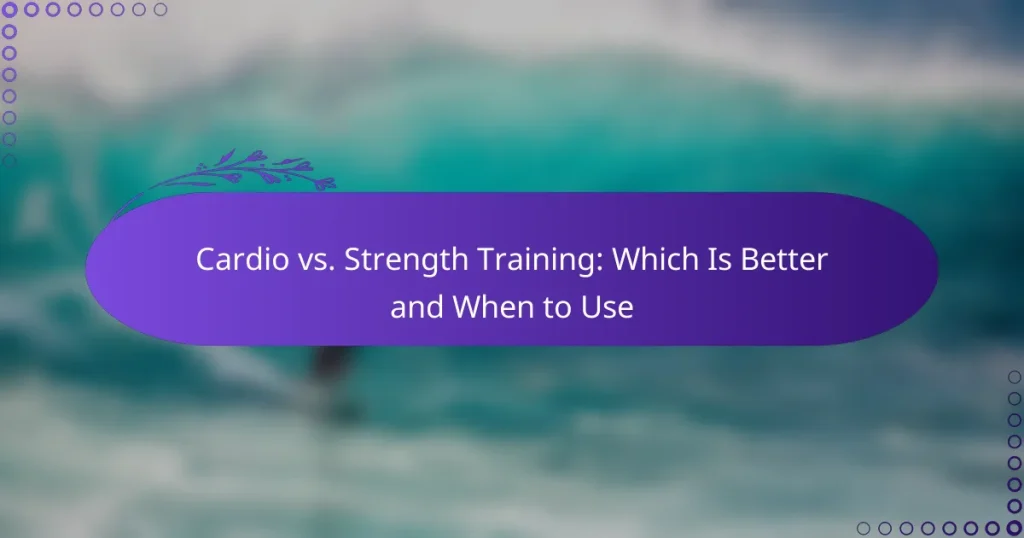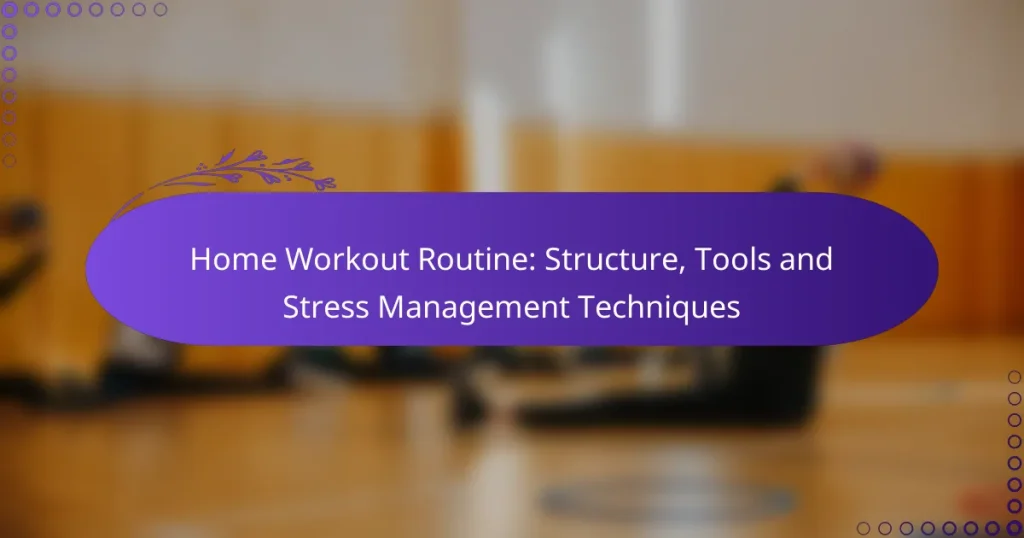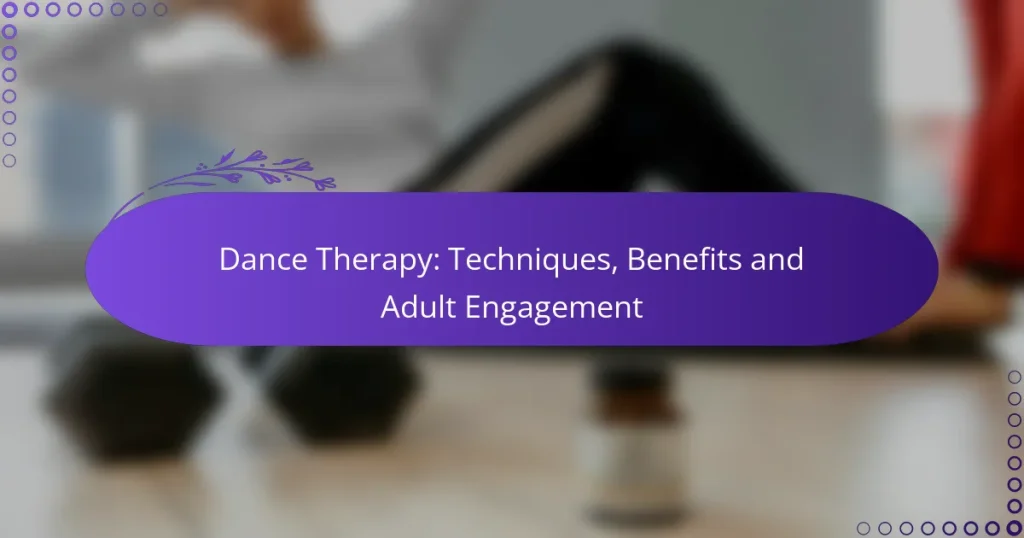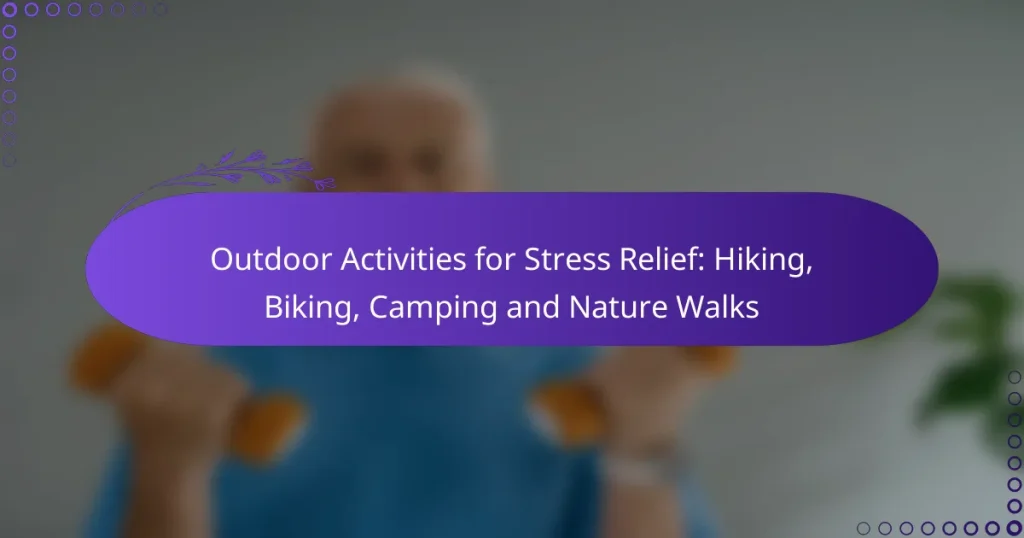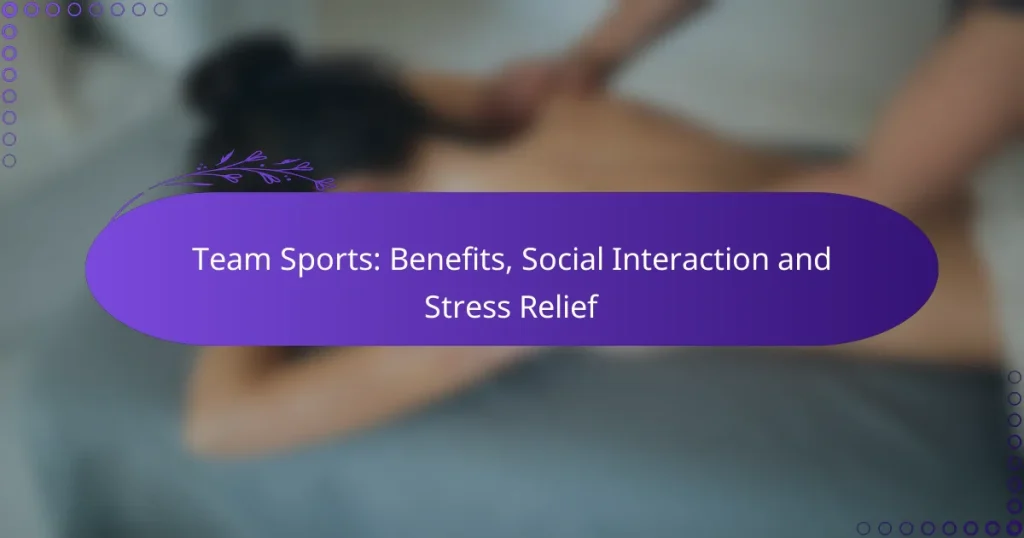Engaging in physical activities is a powerful way to alleviate stress and enhance overall well-being. Activities such as yoga, running, and swimming not only promote relaxation but also trigger the release of endorphins, which elevate mood and reduce anxiety. By incorporating these exercises into your routine, you can foster a healthier mindset and improve your emotional resilience.
Cardio vs. Strength Training: Which Is Better and When to Use
Walking: Benefits, Techniques and Urban Adaptations
Home Workout Routine: Structure, Tools and Stress Management Techniques
Dance Therapy: Techniques, Benefits and Adult Engagement
Outdoor Activities for Stress Relief: Hiking, Biking, Camping and Nature Walks
Team Sports: Benefits, Social Interaction and Stress Relief
What physical activities relieve stress effectively?
Physical activities that effectively relieve stress include yoga, running, swimming, dancing, and walking in nature. These activities promote relaxation, boost mood, and foster a sense of well-being through various physical and psychological mechanisms.
Yoga for relaxation
Yoga combines physical postures, breathing exercises, and meditation, making it a powerful tool for stress relief. Practicing yoga can lower cortisol levels, enhance relaxation, and improve mental clarity. Aim for sessions lasting 30 to 60 minutes, focusing on gentle styles like Hatha or Yin for maximum relaxation.
Consider joining a local class or using online resources to guide your practice. Consistency is key; try to practice several times a week to experience significant benefits.
Running for endorphins
Running is an effective way to relieve stress by releasing endorphins, often referred to as “feel-good” hormones. A moderate run of 20 to 30 minutes can elevate your mood and reduce anxiety levels. Choose a route that you enjoy, whether it’s a park, trail, or urban setting, to make the experience more enjoyable.
Set realistic goals, such as running a few times a week, and gradually increase your distance or pace. Remember to wear proper footwear to prevent injuries and enhance your running experience.
Swimming for tranquility
Swimming offers a unique combination of physical activity and soothing water immersion, making it a great stress reliever. The rhythmic nature of swimming can induce a meditative state, helping to clear your mind. Aim for sessions of at least 30 minutes, focusing on strokes that you find comfortable.
Consider joining a local pool or swim club to stay motivated. Swimming can be particularly beneficial if you enjoy being in water, as it can enhance your overall sense of well-being.
Dancing for joy
Dancing is not only a fun activity but also an excellent way to relieve stress and boost your mood. Engaging in dance releases endorphins and allows for self-expression, which can be incredibly liberating. Whether you join a class or dance at home, aim for at least 30 minutes of movement to feel the benefits.
Explore different styles, from salsa to hip-hop, to find what resonates with you. Dancing with friends can further enhance the experience, making it a social and joyful activity.
Walking in nature
Walking in nature is a simple yet effective way to reduce stress and improve mental health. Being outdoors can lower cortisol levels and enhance feelings of relaxation. Aim for walks of at least 30 minutes in green spaces, parks, or along scenic trails to fully benefit from this activity.
Try to disconnect from technology during your walk to fully immerse yourself in the environment. Observe the sights and sounds around you, which can enhance mindfulness and promote a sense of peace.
How does exercise impact mental health?
Exercise significantly improves mental health by reducing stress and enhancing emotional well-being. Physical activity triggers the release of endorphins, which are natural mood lifters, and can help mitigate symptoms of anxiety and depression.
Reduces anxiety levels
Engaging in regular physical activity can lower anxiety levels by promoting relaxation and reducing muscle tension. Activities like jogging, swimming, or even brisk walking can lead to a noticeable decrease in feelings of anxiety, often within a short time frame.
To maximize anxiety relief, aim for at least 150 minutes of moderate exercise per week, as recommended by health authorities. Incorporating mindfulness practices, such as yoga or tai chi, can further enhance the calming effects of physical activity.
Improves mood
Exercise is known to boost mood by increasing the production of neurotransmitters like serotonin and dopamine. These chemicals play a crucial role in regulating emotions and can lead to a more positive outlook on life.
Participating in group sports or fitness classes can also foster social connections, which are essential for emotional support. Aim for activities that you enjoy, as this will increase the likelihood of maintaining a consistent exercise routine.
Enhances cognitive function
Regular physical activity has been shown to enhance cognitive function, including improved memory and concentration. Exercise increases blood flow to the brain, which can help stimulate the growth of new brain cells and improve overall brain health.
Incorporating aerobic exercises, such as cycling or dancing, into your routine can be particularly beneficial for cognitive performance. Consider setting aside time for physical activities that challenge both your body and mind, such as martial arts or team sports, to reap the cognitive benefits.
What types of yoga are best for stress relief?
Hatha, restorative, and vinyasa yoga are among the most effective styles for relieving stress. Each type offers unique benefits that cater to different needs, making them suitable for various levels of experience and preferences.
Hatha yoga for beginners
Hatha yoga is an excellent starting point for those new to yoga and seeking stress relief. This style emphasizes basic postures and breathing techniques, allowing practitioners to build a strong foundation. Classes typically move at a slower pace, making it easier to focus on alignment and relaxation.
Beginners should look for classes labeled as “gentle” or “beginner-friendly” to ensure a supportive environment. Practicing Hatha yoga regularly can help reduce anxiety and improve overall well-being.
Restorative yoga for deep relaxation
Restorative yoga focuses on relaxation and rejuvenation, making it ideal for stress relief. This practice uses props to support the body in various poses, allowing for prolonged stretches that promote deep relaxation. Sessions often include fewer poses held for longer durations, encouraging a meditative state.
To maximize the benefits, practitioners should find a quiet space and dedicate time to breathe deeply while in each pose. Incorporating restorative yoga into a weekly routine can significantly enhance mental clarity and emotional stability.
Vinyasa yoga for flow
Vinyasa yoga is characterized by its dynamic flow, linking breath with movement. This style can be invigorating and is effective for stress relief due to its rhythmic nature. Practitioners often experience a sense of liberation as they transition smoothly between poses, which can help clear the mind and release tension.
For those interested in Vinyasa, it’s beneficial to choose classes that emphasize breath awareness and mindfulness. This approach can enhance the calming effects of the practice, making it a powerful tool for managing stress.
What are the benefits of outdoor activities for stress relief?
Outdoor activities provide numerous benefits for stress relief, including improved mood, reduced anxiety, and enhanced overall well-being. Engaging in physical exercise outside allows individuals to experience the calming effects of nature while promoting physical health.
Fresh air and sunlight
Fresh air and sunlight are essential components of outdoor activities that contribute to stress relief. Exposure to natural light helps regulate circadian rhythms and boosts serotonin levels, which can enhance mood. Aim for at least 15-30 minutes of outdoor time daily to reap these benefits.
Additionally, fresh air can improve lung function and increase energy levels, making outdoor activities more enjoyable. Consider activities like walking, jogging, or cycling in parks or nature reserves to maximize these advantages.
Connection with nature
Connecting with nature during outdoor activities can significantly reduce stress levels. Studies suggest that spending time in green spaces can lower cortisol levels, the hormone associated with stress. Engaging in activities like hiking, gardening, or simply sitting in a park can foster this connection.
To enhance your experience, choose locations that resonate with you, whether it’s a serene forest or a vibrant beach. The sights, sounds, and smells of nature can create a calming atmosphere that promotes relaxation.
Community engagement
Participating in outdoor activities often leads to community engagement, which can further alleviate stress. Joining local sports teams, hiking clubs, or community fitness classes fosters social connections that provide emotional support. These interactions can help combat feelings of isolation and enhance overall mental health.
Look for community events or group activities in your area, such as charity runs or outdoor yoga sessions. Engaging with others not only boosts motivation but also creates a sense of belonging, which is crucial for stress management.
How to choose the right physical activity for stress relief?
Choosing the right physical activity for stress relief involves understanding your personal preferences, fitness levels, and available resources. This ensures that the activity you select is enjoyable, manageable, and accessible, enhancing its effectiveness in reducing stress.
Assess personal preferences
Your personal preferences play a crucial role in selecting a physical activity for stress relief. Consider what types of activities you enjoy, whether it’s running, yoga, dancing, or team sports. Enjoyment increases the likelihood of consistency, which is key for stress management.
Think about whether you prefer indoor or outdoor activities, solo or group settings. For example, if you thrive in social environments, group classes or team sports may be more beneficial. Conversely, if you prefer solitude, activities like hiking or swimming might suit you better.
Consider fitness levels
When choosing a physical activity, it’s essential to consider your current fitness level. Selecting an activity that matches your abilities can prevent injury and promote a positive experience. If you are just starting, low-impact exercises such as walking or gentle yoga can be effective.
For those with higher fitness levels, more vigorous activities like running or high-intensity interval training (HIIT) may be appropriate. It’s important to gradually increase intensity and duration to avoid burnout and maintain motivation.
Evaluate available resources
Assessing available resources is vital when selecting a physical activity for stress relief. Consider what facilities, equipment, or classes are accessible in your area. For instance, if you have a gym membership, you might explore classes or equipment available there.
Additionally, look into community resources such as local parks, trails, or recreational centers that offer free or low-cost activities. Online platforms also provide a variety of workout videos and classes that can be done at home, making it easier to incorporate physical activity into your routine without significant financial investment.
What are some local physical activity options for stress relief?
Local physical activity options for stress relief can include a variety of exercises and recreational activities that promote relaxation and well-being. These options often cater to different preferences and can be easily accessed in community centers, parks, or gyms.
Outdoor Activities
Engaging in outdoor activities like hiking, cycling, or jogging can significantly reduce stress levels. Nature has a calming effect, and being outside allows for fresh air and sunlight, which can enhance mood. Look for local trails or parks that offer scenic routes to enjoy while exercising.
Consider joining a local walking group or participating in community events like fun runs. These social aspects can further boost your motivation and provide a sense of belonging, which is beneficial for mental health.
Group Classes
Group fitness classes such as yoga, Pilates, or Zumba provide structured environments for stress relief. These classes often incorporate mindfulness and breathing techniques that help participants focus and relax. Many local gyms and studios offer a range of classes at various times to fit different schedules.
Check for introductory offers or trial classes to find the right fit for you. Participating in group classes can also foster a sense of community, which can be a great support system for managing stress.
Team Sports
Joining a local sports team can be an excellent way to relieve stress while enjoying physical activity. Sports like soccer, basketball, or volleyball not only provide a good workout but also encourage teamwork and camaraderie. Many communities have leagues for various skill levels, making it easy to find a suitable team.
Regular participation in team sports can help build social connections and improve overall mental health. Look for recreational leagues in your area that welcome newcomers and offer flexible schedules.
